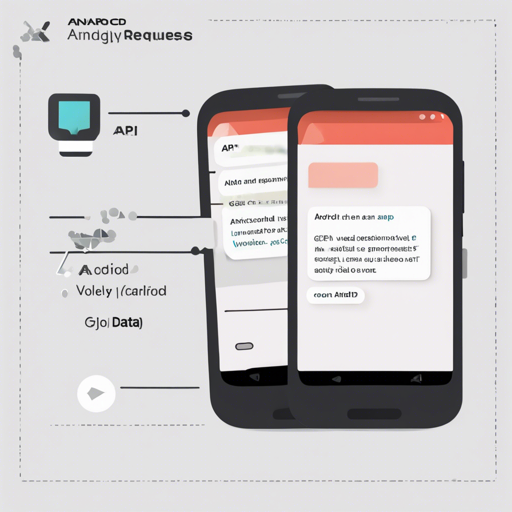In the world of mobile app development, making API calls is a common task. Libraries like Volley and Gson make this process easier and efficient. This article will guide you step-by-step on how to implement a simple API request using these libraries.
Step 1: Setting Up Your Environment
Before diving into the code, ensure your development environment is ready. You need to include Volley and Gson in your project’s dependencies. Add the following lines in your build.gradle file:
implementation 'com.android.volley:volley:1.1.1'
implementation 'com.google.code.gson:gson:2.8.6'
Step 2: Creating the API Request
Now, let’s write the code to make an API request. The example below illustrates how to use Volley along with Gson to retrieve data from a server.
public static void query(String type, String postId, final HttpCallbackSearchResult callback) {
String action = "query";
Map params = new HashMap(2);
params.put("type", type);
params.put("postId", postId);
String url = makeUrl(action, params);
GsonRequest request = new GsonRequest(url, SearchResult.class,
new Response.Listener() {
@Override
public void onResponse(SearchResult searchResult) {
callback.onResponse(searchResult);
}
},
new Response.ErrorListener() {
@Override
public void onErrorResponse(VolleyError volleyError) {
callback.onError(volleyError);
}
}) {
@Override
public Map getHeaders() throws AuthFailureError {
Map headers = new HashMap();
headers.put("Referer", "BASE_URL");
return headers;
}
};
request.setShouldCache(false);
getRequestQueue().add(request);
}
This snippet initiates a request using Volley while parsing the response using Gson, thus allowing you to easily handle JSON data returned from the API.
Analogy: Crafting a Delicious Dish
Think of making an API call like preparing a dish:
- Ingredients (API Parameters): The ingredients you choose (like
typeandpostId) are essential for crafting your dish (request). If you miss key ingredients, the dish will not turn out well. - Cooking Technique (Volley): Just as you would use a specific cooking technique (like baking or frying), Volley is your method for sending the request to the server and collecting the data. It’s an efficient way to handle your cooking (requests).
- Recipe (Gson): Finally, Gson acts as your recipe that tells you how to convert the data (your finished dish) back into objects that you can use in your application. Without a recipe, you won’t know how to present your dish!
Troubleshooting Common Issues
If you encounter problems while implementing this pattern, consider these troubleshooting steps:
- Check Your Internet Connection: Ensure that your device has a stable internet connection to interact with the API.
- API URL and Endpoints: Double-check the API URL and parameters being sent in the request.
- Permissions: Ensure that the app has the necessary permissions to access the internet in the
AndroidManifest.xmlfile. - Error Handling: Pay attention to the error logs provided in the
onErrorResponsemethod. They can give clues on what went wrong.
For more insights, updates, or to collaborate on AI development projects, stay connected with fxis.ai.
Conclusion
Using Volley and Gson simplifies the process of making API requests and handling JSON data in Android applications. With the right setup, you can enhance your app’s functionality.
At fxis.ai, we believe that such advancements are crucial for the future of AI, as they enable more comprehensive and effective solutions. Our team is continually exploring new methodologies to push the envelope in artificial intelligence, ensuring that our clients benefit from the latest technological innovations.

